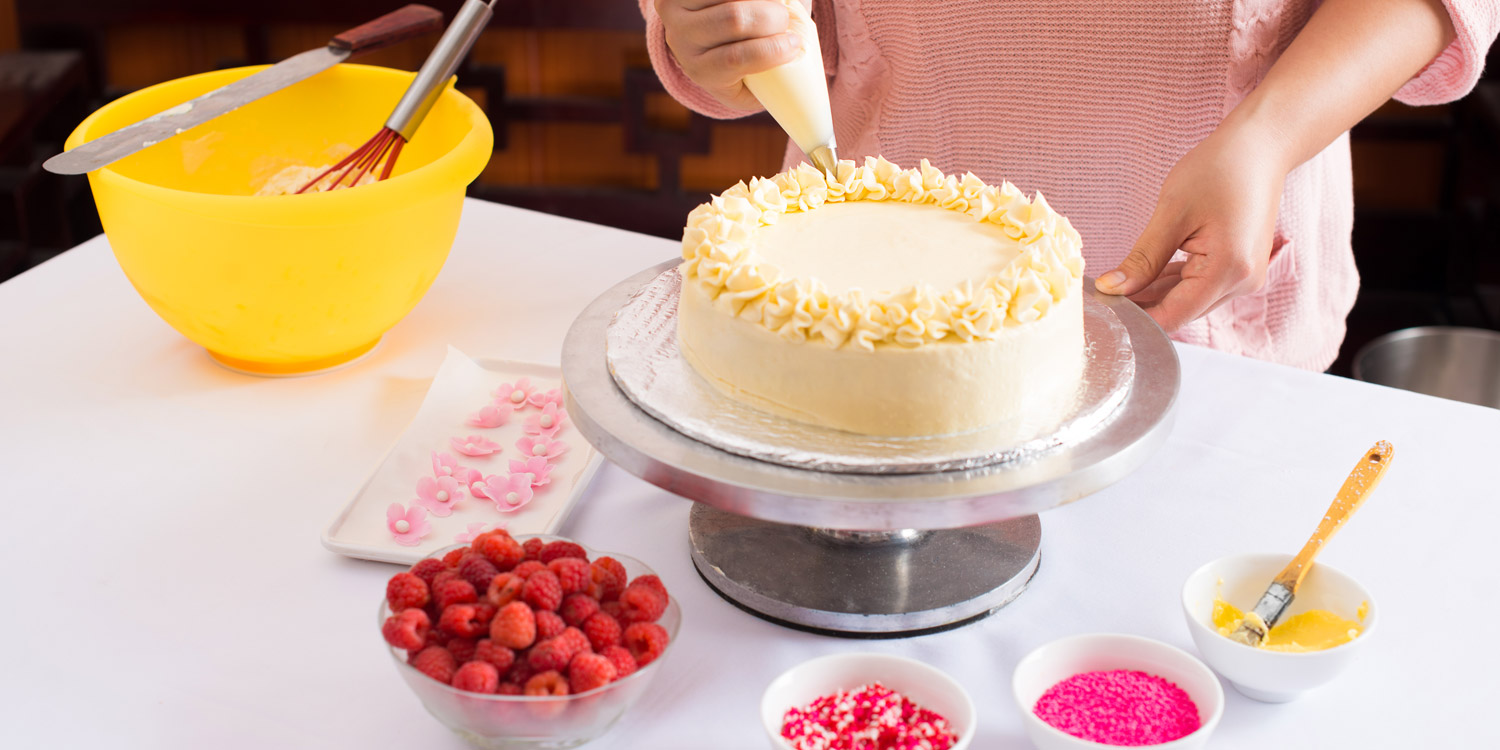Like any other hobby or interest worth pursuing, it can take quite a period of time to learn all the cake decorating intricacies, an art that even stumps veteran designers from time to time, who acknowledge that they’re never really done discovering techniques or tricks to create that truly “ultimate cake.” Because there are so many different subsets and approaches to decorating, we’re going to offer the following important tips to assist you in your cake decorating indulgences as divided into appropriate sections.
Piping
All cakes are glorious, but when “piping” is applied in the form of hearts, stars or smiling faces, they’re truly something to behold. Here we’re going to teach you how to use a pastry bag and some new pastry tips to create a unique masterpiece.
- Ensure your icing is sufficiently stiff for the piping process – otherwise, your rosettes, leaves or basketweave design will literally collapse. Try practicing these designs first and watch for the detail to disappear and become smooth.
- If ruffling piping is creating the border at the bottom of your cake, you should make sure that the more weighted section of the design sits against the cake to veil it; the “ruffle” will sit on the outside.
- When swags are piped on an iced cake, always size around it with a tape measure and make notations as to precisely where each swag should start and finish; this ensures even spacing.
Fondant and Marzipan
Marzipan is an almond-flavored candy paste that can be used like “chocolate plastic” or fondant to produce smooth, beautifully-covered cakes.
- When rolling out marzipan, your work surface shouldn’t be sprinkled with cornstarch as this will dry it out and crack your work.
- Using black paste to color white fondant to black is impossible because the resulting fondant will be a shade of gray; first, in stages try creating dark green, then add brown and finally the black.
- Commercial fondant can exhibit less elasticity than homemade types; try adding gum tragacatch or tylose to the fondant to give it more elasticity and to make sure it’s less likely to tear when shaping or rolling designs.
- Store fondant cutouts in a sealed container or wrap them in plastic until they’re needed; they might dry out otherwise, and appear less attractive.
- Knead a bit of vegetable shortening into fondant prior to covering a cake with it to ensure that shoulder or seam cracking will be minimized.
Buttercream and Royal Icing
Traditional royal icing is made from a recipe that calls for confectioner’s sugar, varying amounts of water (for multiple consistencies) and either egg whites or meringue powder, while buttercream is a type of icing or filling used inside cakes as a coating and decoration; in its simplest form, buttercream is made by creaming butter with powdered sugar, though other fats could be used.
- Buttercream-covered cakes that have been refrigerated have the tendency to “sweat” when removed from the fridge, but do not try to blot or otherwise correct this; just leave the cake at room temperature until moisture is reabsorbed.
- Most of the decorations piped in buttercream can also be crafted using royal icing; when exposed to any type of grease or fat, royal icing will break down so it is important that you use no piping bags or utensils that have been used for buttercream.
- Never perform royal icing piping on a cake iced with buttercream.
Gum Paste
Like fondant, gum paste is a pliable dough which is often used for cake decorating.
- If your gum paste is kneaded too dry, try a little white vegetable shortening before using to soften it and make it easier to handle.
- Apply luster dust to playfully create the pollen on the centers of lily flowers; get a paintbrush and pack it heavy with yellow luster dust, applying liberally to the flower.
- Always make extra wired leaves or petals when creating flowers made of gum paste in the event of breakage or color missteps.
Always Practice Your Cake Decorating
One of the most important cake decorating tips you can take out of this article is to always practice your design element beforehand to make sure the texture and flow of the icing is perfect.
If you’re a beginner you can always get yourself a DIY cake decorating kit to start the process off much easier than making everything from scratch, but you will still have to do the work and put it all together.

